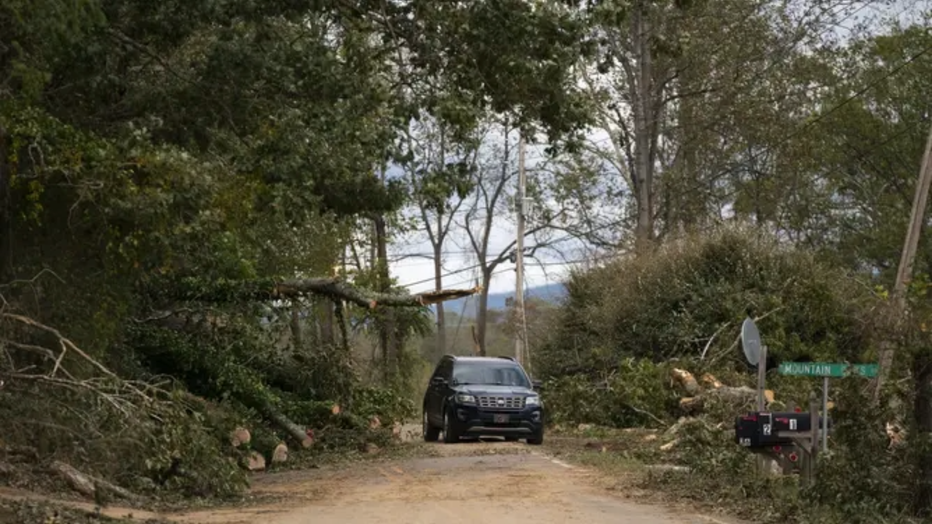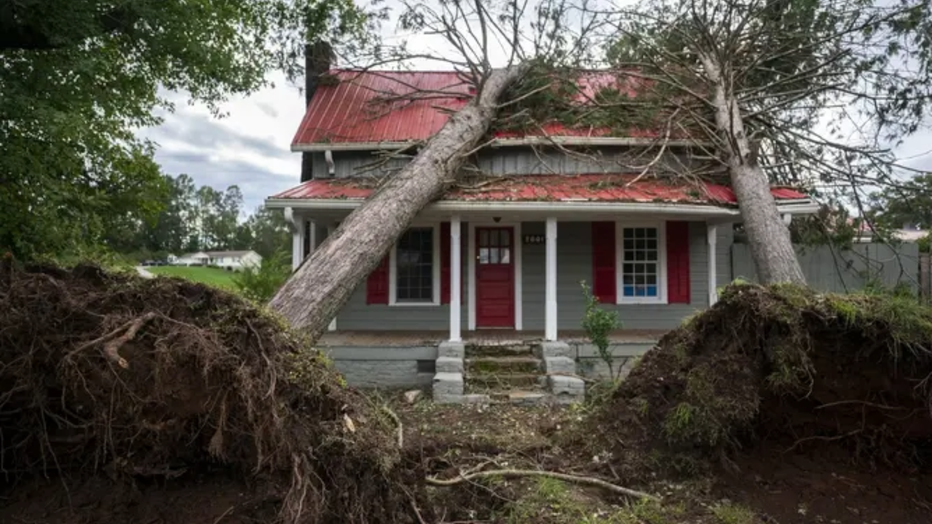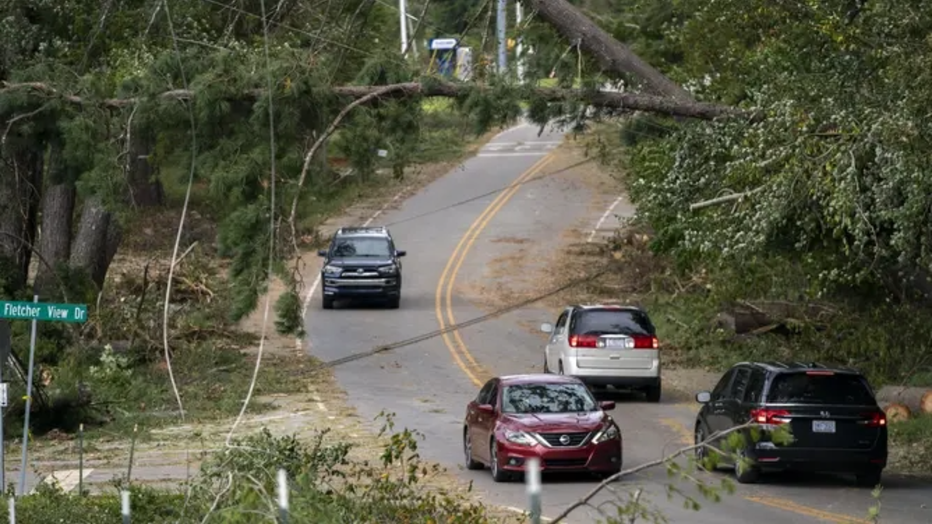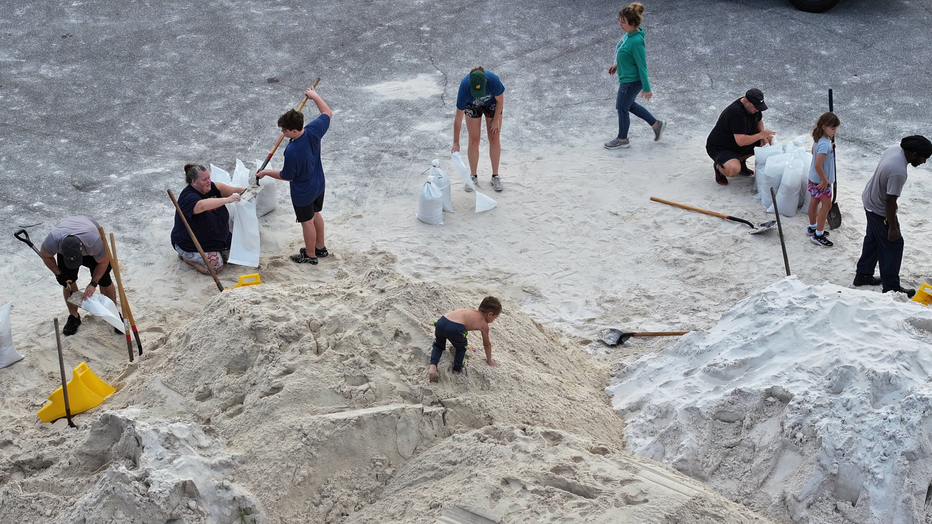Hurricane Helene death toll nears 121 across Southeast, rescue efforts intensify

Hurricane Helene's death toll rises in southeast
The destruction Hurricane Helene caused is still coming into focus. The death toll in the southeast continues to climb and the North Carolina governor predicts it will worsen once rescuers reach isolated areas. FOX 5 NY's Duarte Geraldino reports.
At least 121 people have been confirmed dead across six states – Florida, Georgia, South Carolina, North Carolina, Virginia and Tennessee.
As of Monday, crews are working to clear debris, restore power, and deliver food and water to stranded residents.
When did Helene arrive?

A motorist passes around downed trees on the road in the aftermath of Hurricane Helene on September 29, 2024 in Fletcher, North Carolina. (Sean Rayford/Getty Images)
The Category 4 hurricane made landfall along Florida’s Big Bend region late Thursday night, with winds of 140 mph and a devastating storm surge that lashed the area and left widespread destruction from the Sunshine State through Georgia into the Carolinas and Tennessee Valley as the storm traveled across the U.S.
Effects of Hurricane Helene

Downed trees on a home in the aftermath of Hurricane Helene on September 29, 2024 in Rutherfordton, North Carolina. (Sean Rayford/Getty Images)
Millions of people were plunged into darkness as the hurricane’s effects brought down trees and utility lines and destroyed homes, businesses and infrastructure.
As of Monday, those outage numbers dropped to 2.1 million – a sign that the nonstop work of utility crews was paying off.
While power is slowly being restored, that's only one of the obstacles first responders and residents are facing as recovery operations after the disaster continue.
People ‘desperate for help’ in North Carolina as death toll rises
Communities in western North Carolina were hit especially hard by the effects of Hurricane Helene, with catastrophic flooding destroying hundreds of roads and bridges. Access to several areas has been cut off, preventing crews from getting much-needed supplies like food, water and fuel to residents.
Dozens of people are now confirmed dead in North Carolina, and hundreds of people remain unaccounted for due to the lack of power and communication access.
A majority of the deaths were reported in Buncombe County, and Sheriff Quentin Miller said the death toll may continue to rise.
"People are desperate for help, and we are pushing to get it to them," North Carolina Gov. Roy Cooper said. "A massive effort. Many people are cut off because roads are impassible. They don’t have power or communications. Please know that we are sending resources and coordinating closely with local governments, first responders, state and federal partners, and volunteer organizations to help those impacted by this tragic storm."

Motorists pass under downed trees hanging on utility cables in the aftermath of Hurricane Helene on September 29, 2024 in Fletcher, North Carolina. (Sean Rayford/Getty Images)
The torrential rain that fell during the storm led to dozens of rare Flash Flood Emergencies, and officials were pleading with people to get to higher ground as the water quickly rose and flowed into communities.
"This unprecedented storm dropped 10 to 29 inches of rain across the mountains, causing life-threatening floods and landslides," Cooper said.
President Joe Biden approved a major disaster declaration for North Carolina over the weekend, and more than 800 Federal Emergency Management Agency staff, along with distribution centers and equipment, have been deployed across the states that were impacted by Helene.
While crews are continuing to clean up in the wake of the storm, the shortage of food, water and fuel is leading to long lines at gas stations as tensions start to run high.
Local media reported arguments breaking out in the long lines among residents who are no doubt exhausted and running out of options while they desperately seek help.
When asked about the delay in supplies and the situation unfolding in Buncombe County, Miller said the supplies were delayed because of the destroyed roads and the Sheriff’s Office was considering posting deputies at gas stations to help prevent more arguments among residents.
While crews are trying to repair those roads, helicopters have been able to start dropping supplies to those who remain isolated until routes can be reopened.
"There are helicopters that are very active. We saw those when we came in last night," FOX Weather Correspondent Robert Ray said. "And yet, there are still people in dire straits in need. It’s a situation right now that is still very, very complicated and fluid."
Storm surge causes catastrophic damage along Florida's Gulf Coast

In this aerial view, people fill sandbags at Helen Howarth Park ahead of the possible arrival of Hurricane Helene on September 25, 2024 in Pinellas Park, Florida. Currently, Tropical Storm Helene is forecast to become a major hurricane, bringing the
The storm surge caused by Hurricane Helene led to catastrophic damage along Florida's Gulf Coast, with the Big Bend region seeing the highest inundation, which exceeded 15 feet. Cities such as Tampa and Clearwater Beach saw their highest storm surge level in decades.
The small barrier island of Treasure Island was particularly devastated, with widespread flooding and property damage. Four people died on the barrier island because of Helene's impacts, according to Treasure Island police.
Residents of Florida's Keaton Beach also experienced Helene's effects, and they are still picking up the pieces.
"Seen a lot of bad storms on this river and seen people recover from a lot," Steven Hatchett told FOX Weather's Robert Ray. "But I've never seen anything this magnitude - not even the (1993) Storm of the Century or any of the hurricanes."
Hatchett said buildings that had been there his whole life are gone.
FOX Weather contributed to this report.

